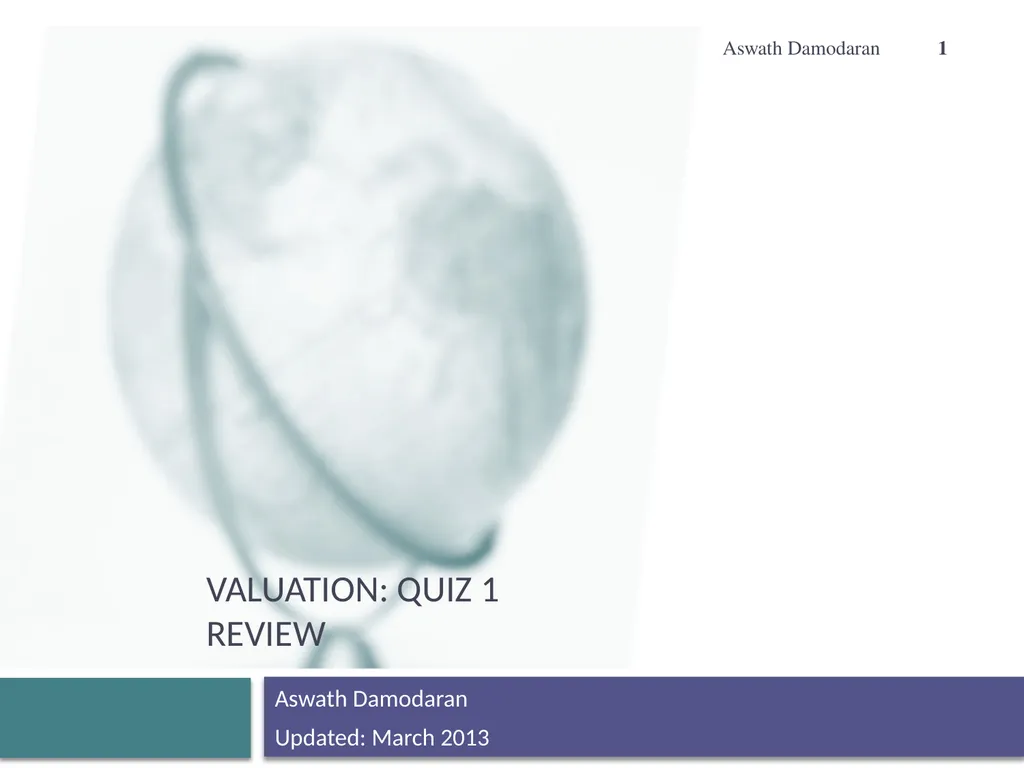
Author : danika-pritchard | Published Date : 2025-11-01
Description: Valuation: Quiz 1 Review Aswath Damodaran Updated: March 2013 Aswath Damodaran 1 Key topics covered Valuation Approaches What are the three approaches to valuation? From a big picture perspective, what are the key differences between theDownload Presentation The PPT/PDF document "" is the property of its rightful owner. Permission is granted to download and print the materials on this website for personal, non-commercial use only, and to display it on your personal computer provided you do not modify the materials and that you retain all copyright notices contained in the materials. By downloading content from our website, you accept the terms of this agreement.
Here is the link to download the presentation.
"Valuation: Quiz 1 Review Aswath Damodaran Updated:"The content belongs to its owner. You may download and print it for personal use, without modification, and keep all copyright notices. By downloading, you agree to these terms.













